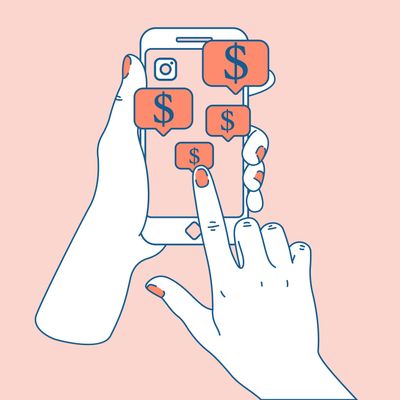
A secret Instagram account is a dangerous thing for a woman like me to have, but I have one. I follow very few people on my personal Instagram account. Most are people I know or have known: close and distant friends, a few cousins, several friend-adjacent professional contacts (sources, editors, former co-workers), my boxing gym, my friend’s band, another friend’s brand. I was about to write that I don’t follow animals, but I just checked and that’s not true. I follow my friend Sarah’s dog, Freddie.
It’s the ones I block, though, who really matter. Everyone blocked on my personal account is blocked on my secret one, too: my ex, his new girlfriend (the one he was having an affair with toward the end of our relationship), his sister and parents, her sister, and their friends. The point is, I’m trying to avoid any possible wormhole through which triggering information might slip through or be found. In another lifetime, there’s a version where I stalk their accounts to find details about his new life, but truthfully, I really do not want to know. I’m happier and saner in the dark. Blocking people might sound rude or extreme, but it’s really not personal. It’s a setting a digital boundary for sanity’s sake. (It certainly isn’t any ruder than creating hundreds of fake accounts from which to cyberstalk them!)
But this secret account is not a finsta, which lots of people have. Mine is a shinsta.
I don’t post on it and I don’t use it to stalk. You see: I shop. I follow vintage clothing resellers and shops around Los Angeles, the kind of accounts where the first to leave her zip code in the comments gets first dibs on the item. Shopping like this is a rush: the immediacy, the competitive auction energy, the slim window for securing such prized items as a pair of white-bronze Quarry Ossip earrings for 72 percent off their retail price. Or $50 Ralph Lauren crocodile slides in my size (6.5 if you’re selling). It is the type of impulse shopping that spikes my adrenaline without obliterating my bank account. It’s a rush, and it’s also deeply embarrassing.
Money remains a lasting taboo — how much, how little, how irresponsible, how prudent. And so to be caught bidding on something as nonessential as a pair of earrings or a vintage vase feels like being caught fixing your face in the reflection of a shop window: vain and needy, desirous, self-seeking. Shopping is a personal activity on a level with grooming, for how much it says about us. There’s also a part of me that needs this negotiating and bidding to exist in anonymity with relation to the sellers. My personal account shows my face, my friends, my work — all information I’d rather my vintage-clothing dealers not have access to, as in a traditional retail experience.
So there’s that, but I also don’t want to see a barrage of vintage blouses whenever I open Instagram to post a picture to my story of a prescient vanity plate, or my cat looking angelic, or my flushed post-facial face. Another reason to keep these separate is that I frankly shouldn’t be shopping on a daily basis, so I don’t want to have that temptation braided into my social-media use, which is its own vice.
I haven’t looked at my OG blocked accounts for 624 days, 15 hours, and 3 minutes as of this writing. (Yes, there’s an app for that.) Which means I haven’t felt the sharp jolt and sudden sinking feeling that often accompanies random bits of personal information found via stalking someone no longer in my life. But I did recently drive through Hollywood rush-hour traffic to pick up a vintage T-shirt from a stranger whose DMs I’d slipped into only moments prior, and let me tell you, it was a rush.




